
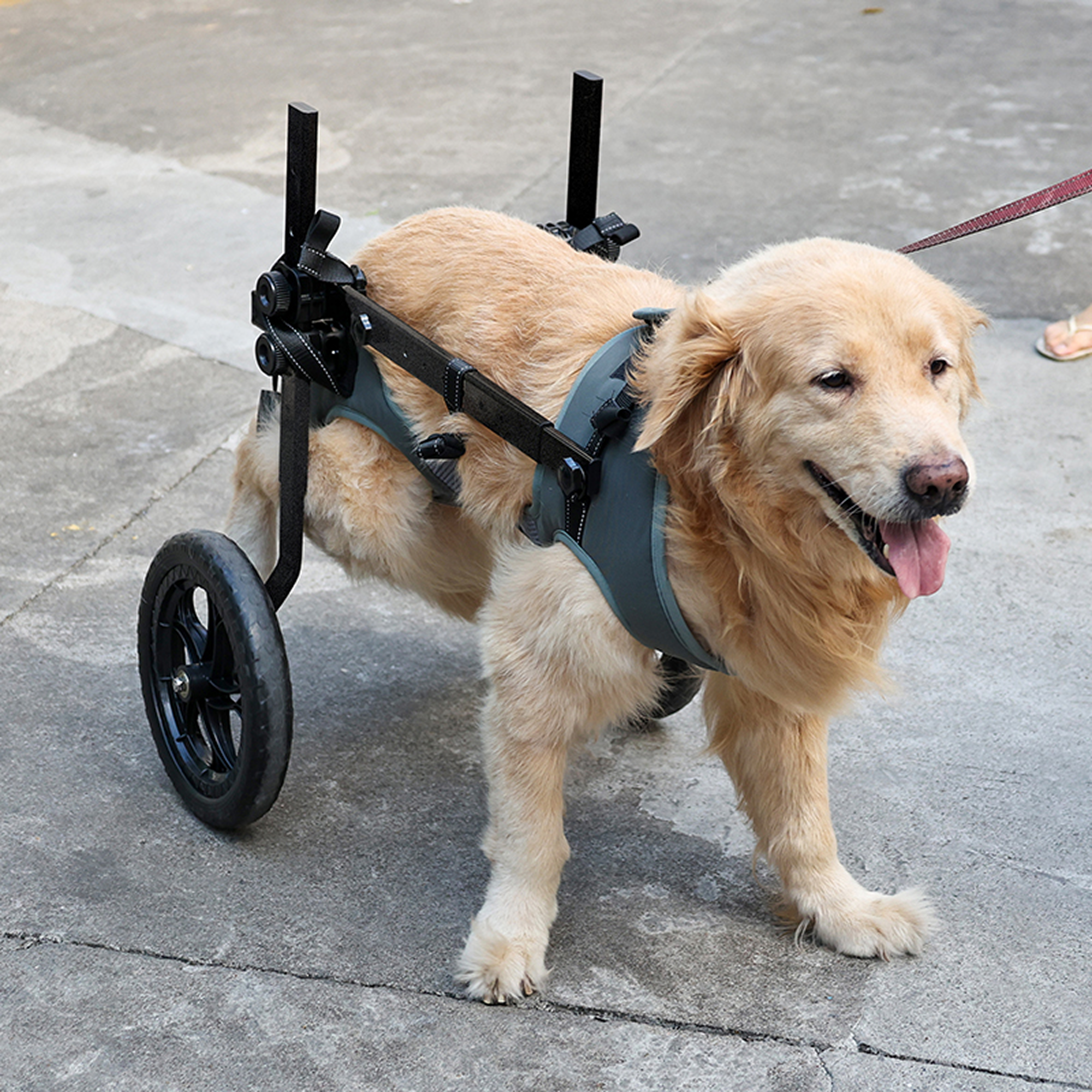
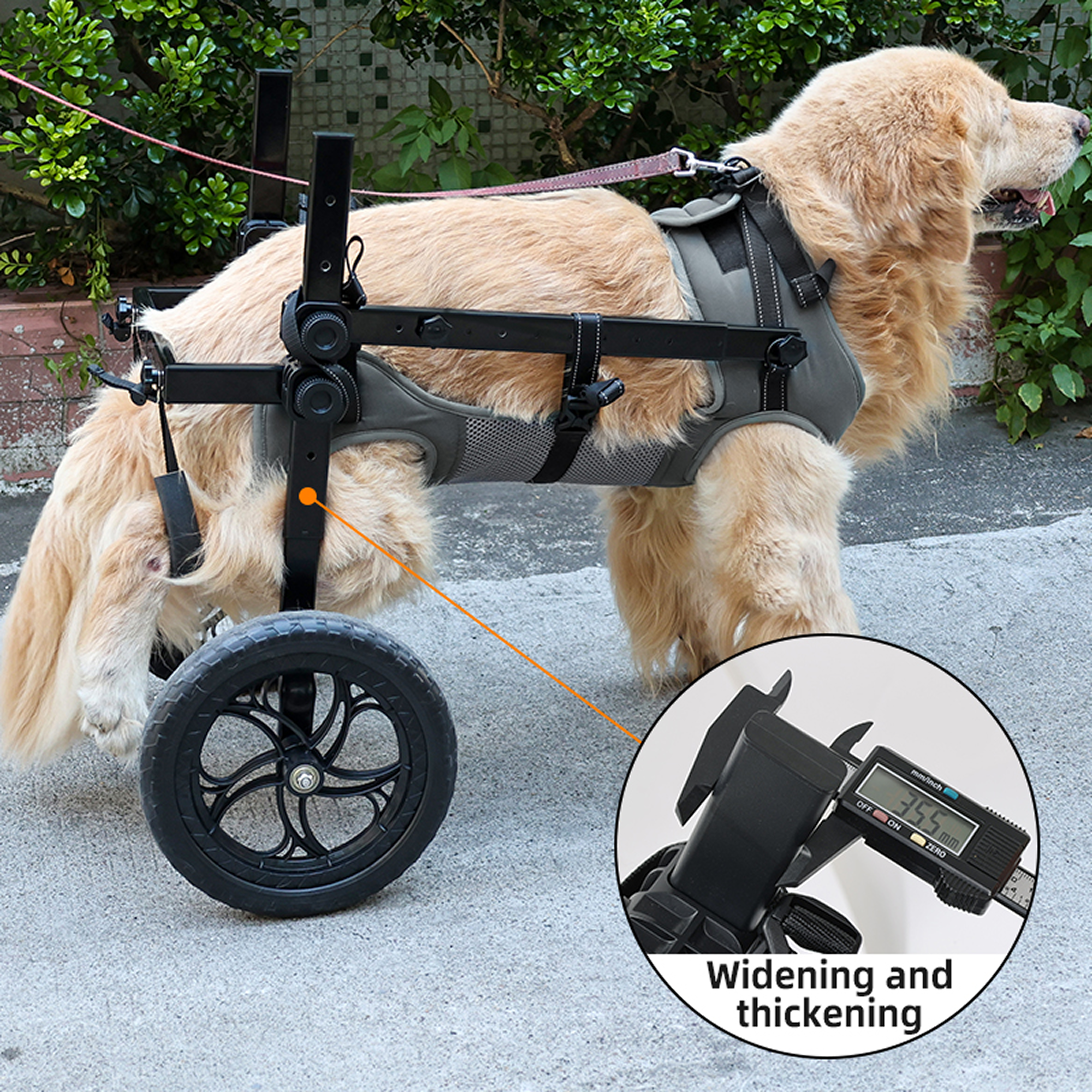

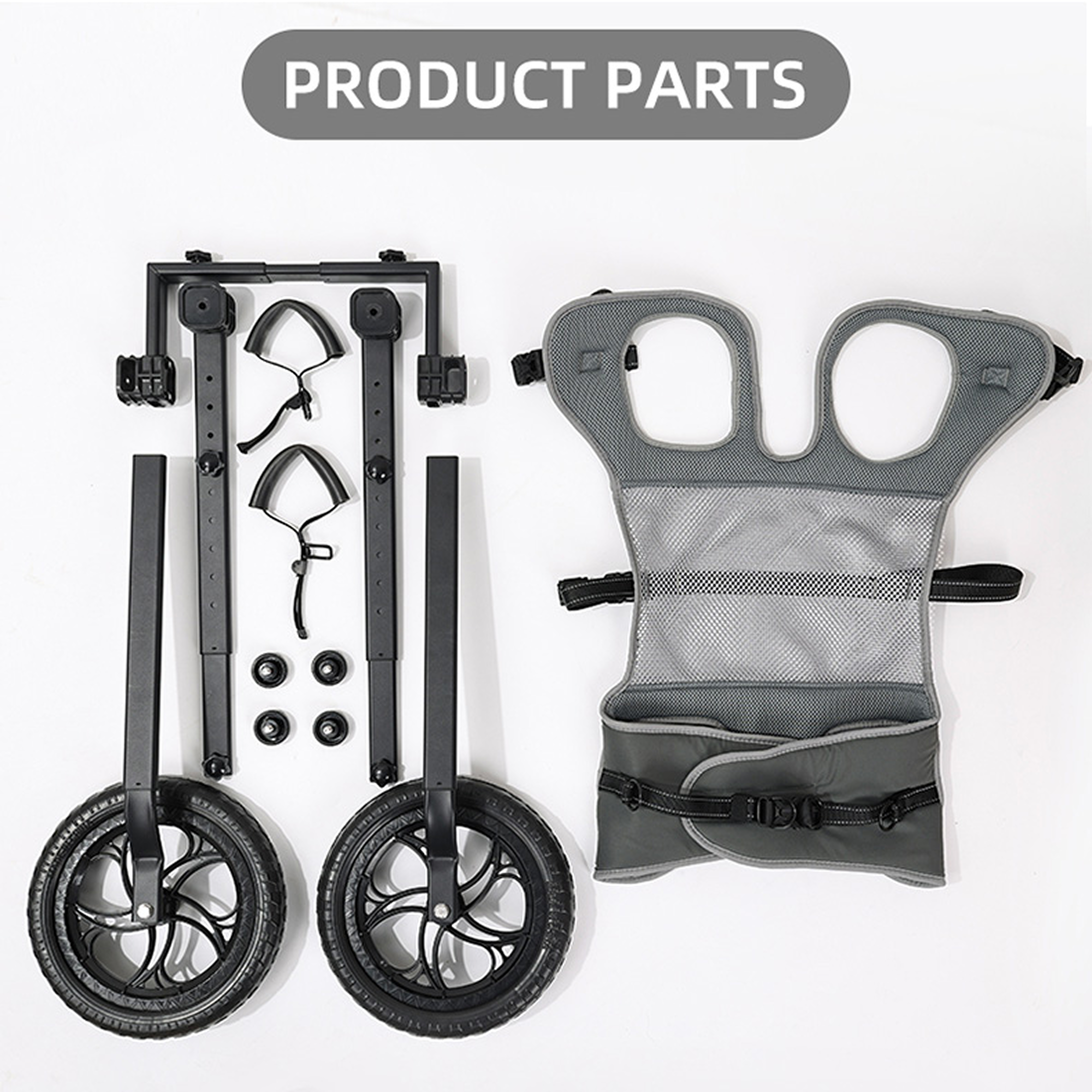
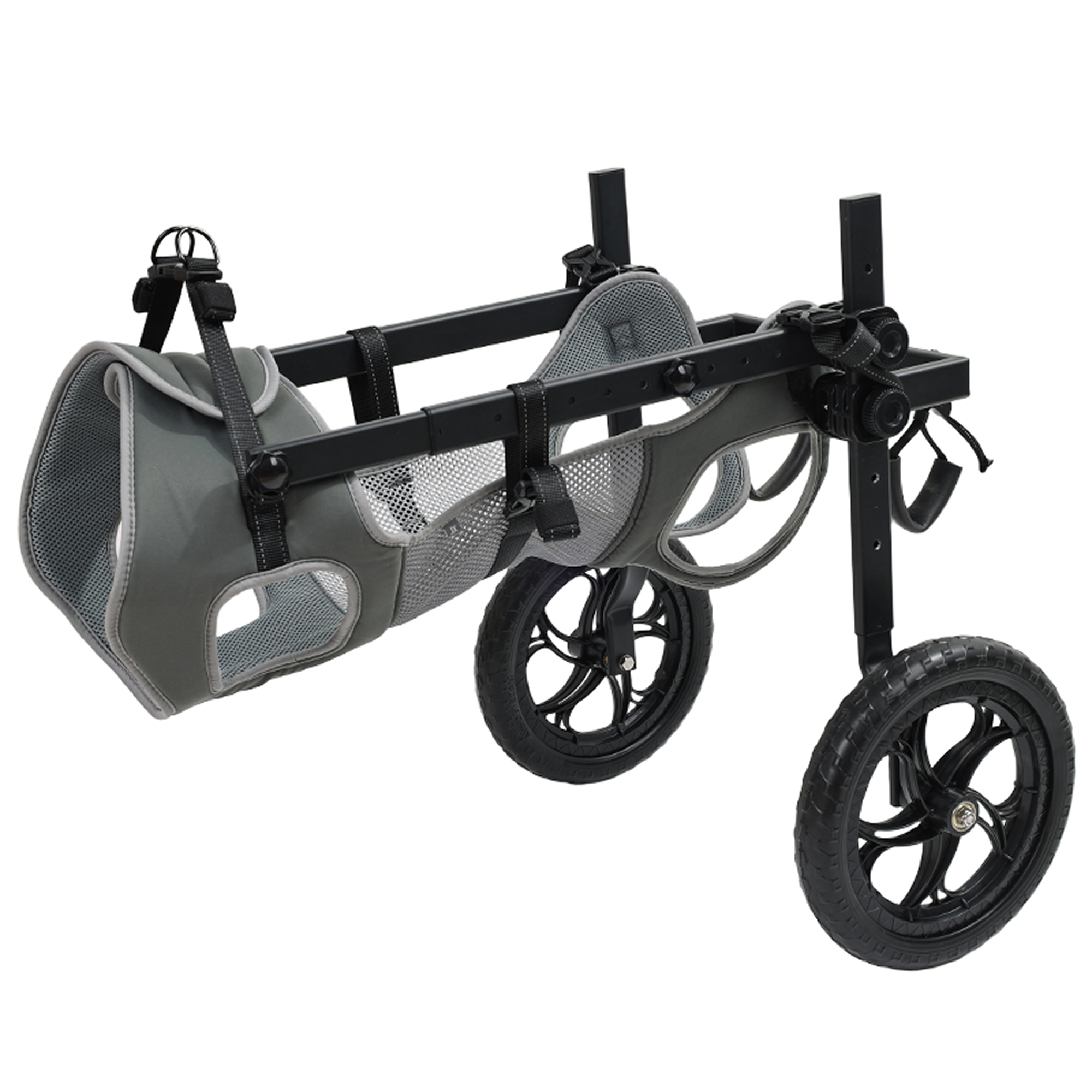
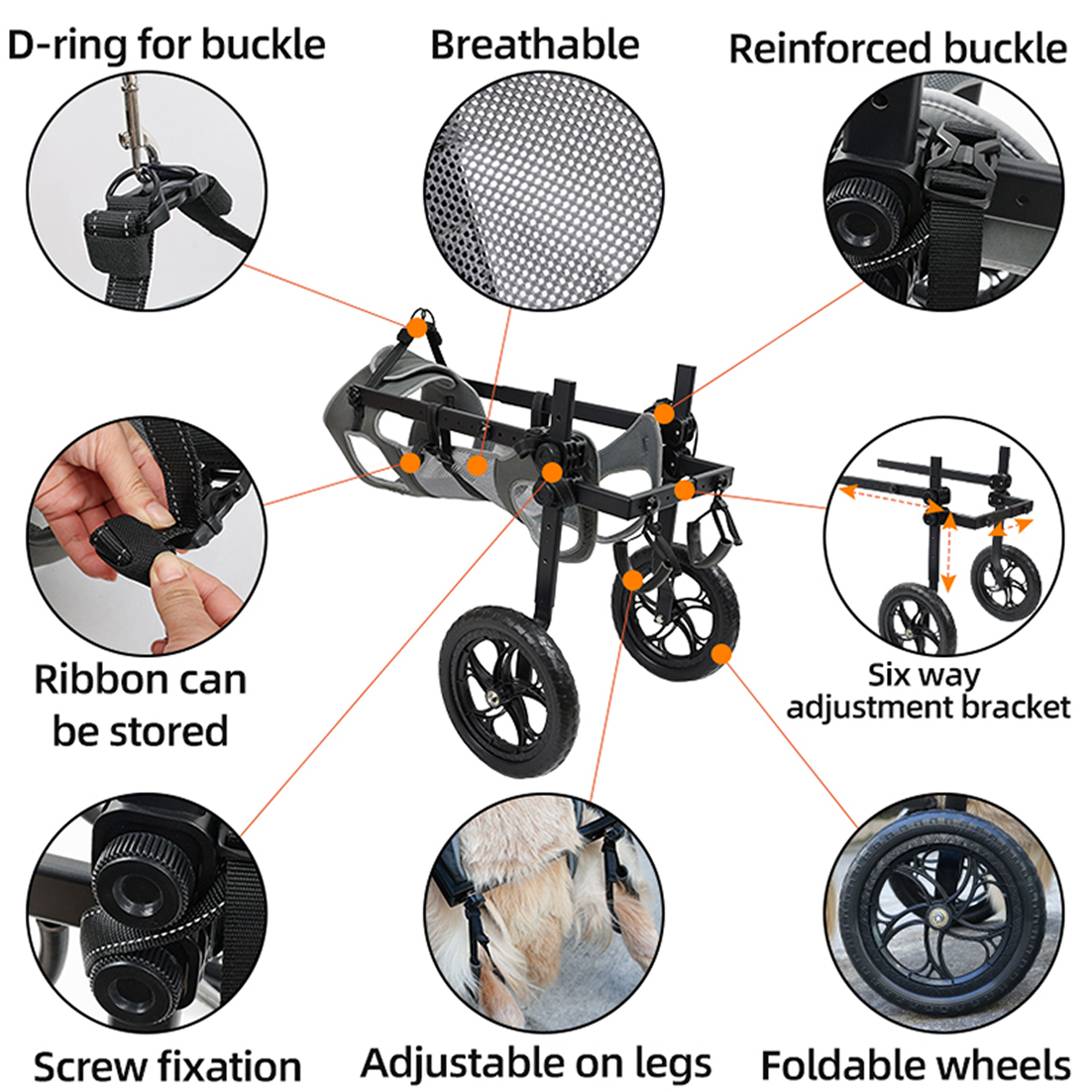

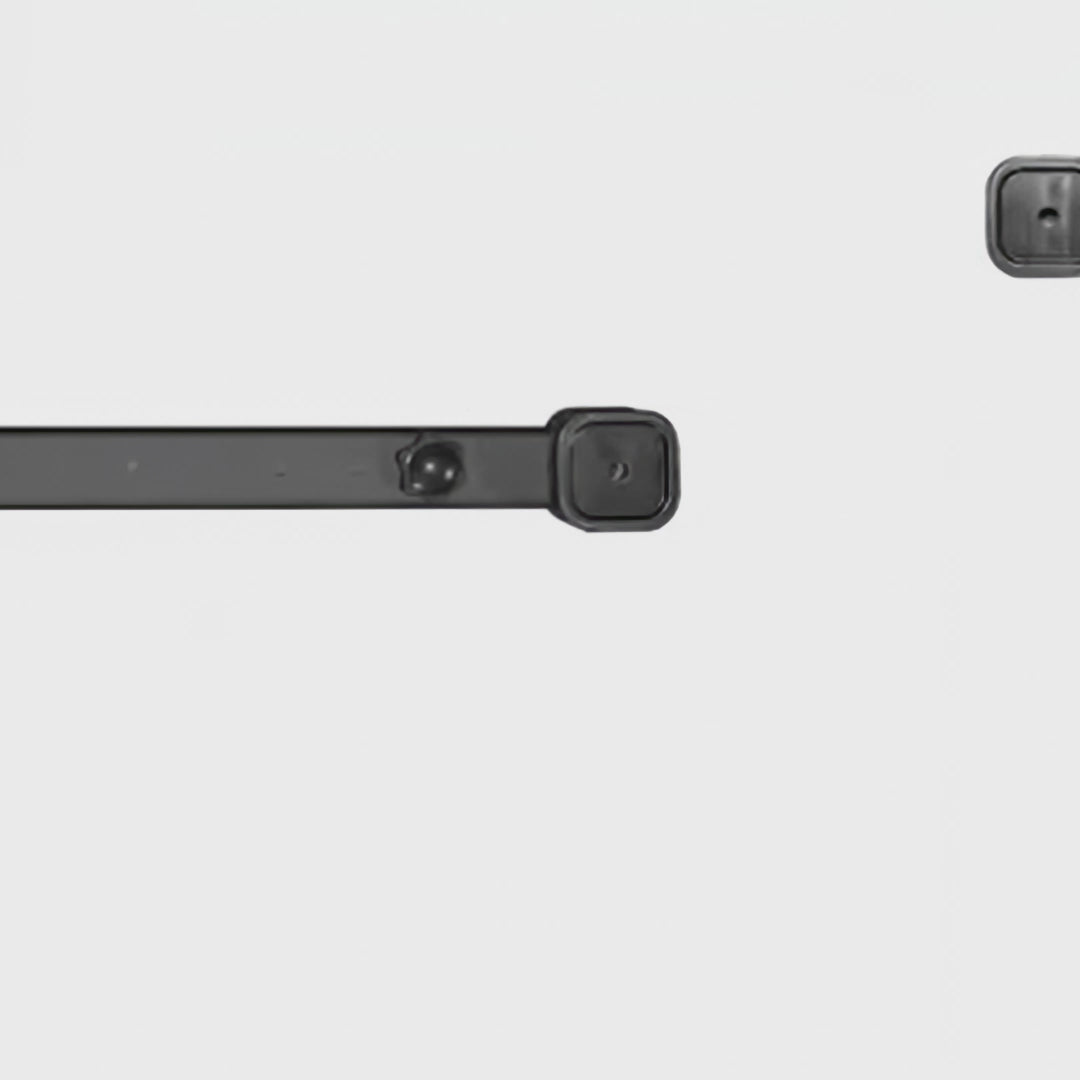
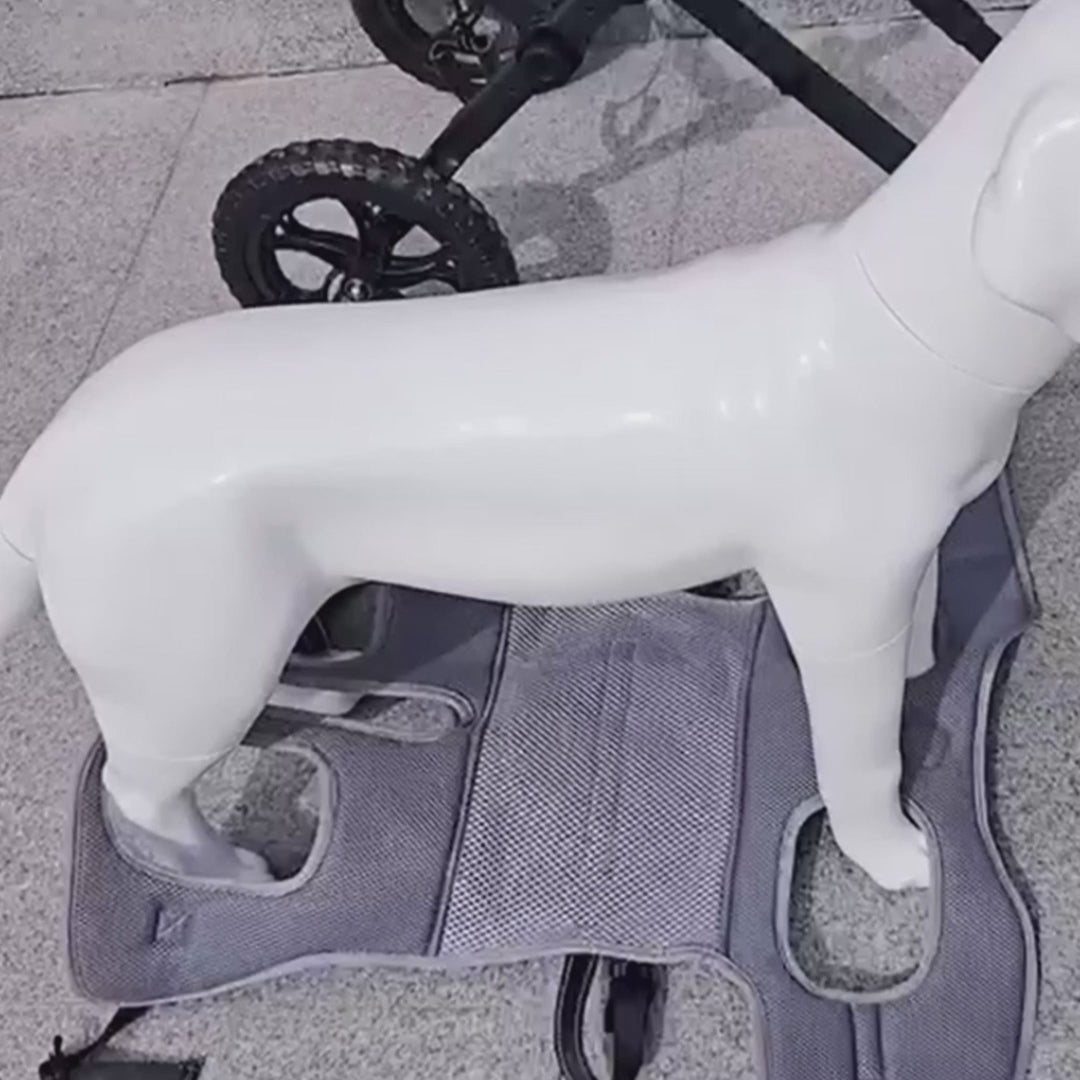
Medium and Large Dog Wheelchair
Our dog wheelchairs are perfect for medium and large dog breeds such as German Shepherds, Labradors, Rottweilers, Bulldogs, and more. These wheelchairs are ideal for dogs with mobility issues, including back leg paralysis, hip dysplasia, degenerative myelopathy, and post-injury recovery. They also support dogs with amputated legs, arthritis, or joint problems.
Not sure how to measure your dog for the right size? Click here!
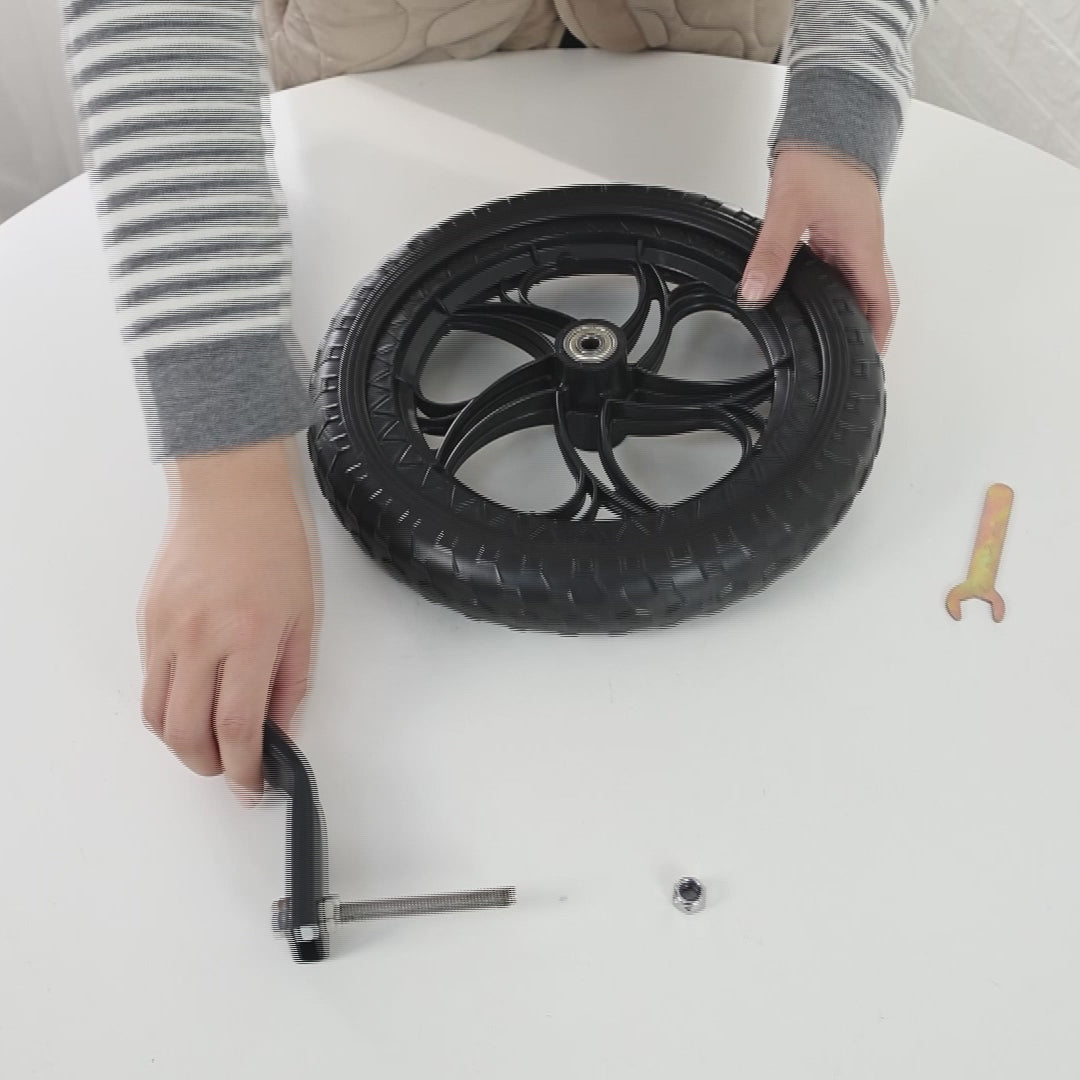
What Makes Our Wheelchair Unique?
✔ Unmatched Comfort & Support: No rough straps here—just a soft, breathable harness that keeps your pup comfy and chafe-free.
✔ Built to Last: Secure, heavy-duty buckles keep your dog safe at all times.
✔ Lightweight & Tough: Our premium aluminum frame is super strong yet light, making movement effortless.
✔ Perfect Fit, Every Time: A 6-way adjustable frame ensures natural posture and all-day comfort.
✔ Adventure-Ready Wheels: Large 11”+ wheels with rugged tread handle grass, gravel, sand, and snow like a pro.
✔ Easy Storage: Disassemble for compact storage or keep the frame built and clip on the harness in seconds!
✔ Potty-Friendly Design: A smartly placed cutout makes bathroom breaks easy for both male and female dogs.
✔ Extra Support When Needed: Adjustable rear leg slings give paralyzed pups added stability.
✔ Rock-Solid Stability: Unlike flimsy alternatives, our screw-fixed frame keeps your dog safe and secure.
✔ Leash-Ready: Built-in D-rings on the harness let you clip on a leash with ease.
✔ Stay Cool & Comfortable: A breathable stomach mesh prevents overheating on warm days.
✔ Low-Maintenance Harness: Dirt-resistant fabric stays cleaner longer, so you don’t have to wash it as often.
FAQs
Can my pet pee and poop in the wheelchair?
Absolutely! The wheelchair is thoughtfully designed so your dog can comfortably relieve itself while also getting the physical exercise it needs. Not only is it possible for your dog to pee and poop while using the wheelchair, but the very design encourages it. Pets who are less mobile may experience changes in their internal systems due to reduced movement. Once in the wheelchair, your dog can stand upright and move more, which helps stimulate healthy bodily functions and allows them to go to the bathroom naturally.
How do I measure my dog for a wheelchair?
It's easy! We've put together a detailed guide on how to measure your pet for the perfect fit. Simply click here to view the instructions.
Can my dog still use their back legs with the wheelchair?
Yes, the wheelchair provides your dog with the support they need to stand, walk, and regain strength. It helps take the load off their legs, making it easier for them to walk. We encourage your dog to use their back legs to maintain muscle mass and stay active, while the wheelchair helps them develop strength and endurance during training. Your dog doesn't need to be completely paralyzed to benefit from the wheelchair. If their back legs are paralyzed, the stirrups will prevent them from dragging.
Is the Furria wheelchair suitable for a fully paralyzed dog?
At the moment, we offer wheelchairs designed for dogs with rear leg issues, but with working front legs. However, we are excited to share that our team is developing a four-wheel wheelchair for fully paralyzed dogs. You can subscribe to our newsletter at the bottom of the page, and we’ll notify you when the new product is available.
Can the wheelchair be used indoors?
Yes, many dogs use their wheelchair both indoors and outdoors. Our wheelchair can easily move through doorways inside the home. Remember, this is also a new experience for your dog. It may take some time for them to get used to navigating around obstacles inside the house. Since the wheelchair's wheels extend outward, we recommend first practicing outdoors, where your dog can get comfortable without worrying about furniture. Be sure to praise and encourage them as they learn to navigate life on wheels!
Can my dog sit or lie down in the wheelchair?
The wheelchair is designed to keep your dog upright and active, but it doesn't allow them to sit or lie down while using it. Our goal is to encourage mobility and exercise, so the chair is structured to keep your dog in a standing position. This helps promote circulation and muscle strength. If your dog is tired or needs a break, it’s important to help them out of the chair so they can rest comfortably. The wheelchair is made for movement, not for sitting or lying down
How do I put my dog into the wheelchair?
It’s really easy! First, put a harness on your dog and fasten the front part. Then, bring the wheelchair behind them and attach the frame to the front of the harness. Next, secure the belly part of the harness to the frame. After that, carefully guide your dog’s back legs into the harness and attach the back part to the frame. It’s that simple!
For a step-by-step visual guide, check out our tutorial video here.
How soon will I receive my order?
We usually process orders within 24 hours. Delivery takes about 2-5 days depending on your state. All shipments are sent from our warehouse in Ohio. Shipping is completely free, and we use UPS or USPS for delivery.
Is it easy to transport the wheelchair?
Yes, our wheelchair is fully collapsible, making it easy to take with you on trips! Whether you're going on vacation or just visiting a friend, you can bring your dog's mobility solution along with ease.
Will this wheelchair help rehabilitate my dog?
Every dog and their disability is unique, as is their rehabilitation process. We've seen incredible improvements in dogs using our wheelchair, some of whom have even progressed to the point where they no longer need it! While your dog is using the wheelchair, they’re getting physical therapy that improves both their physical and mental health.
What is the purpose of a dog wheelchair?
A dog wheelchair enhances both physical and mental health, helping your pet regain mobility, independence, and confidence. It gives your dog the freedom to move around, exercise, and enjoy life in a way that they couldn’t before. It's a wonderful tool to help them live their best life, no matter their condition.
What is your return policy?
We offer a 30-day return policy and a 1-year manufacturer warranty. If you'd like to return a product, just reach out to our support team at support@furria.store or chat with us, and we’ll take care of it.
How do I know if the wheelchair is adjusted correctly?
When the wheelchair is properly adjusted, your dog should be standing in a "natural" position. Here's what to check:
Hip Joints: Imagine a line running from one hip joint to the other; it should go through the middle of the dog's hips. If it's misaligned, tighten the harness or adjust the length.
Back Position: Your dog’s back should be either straight or slightly arched (slightly hunched).
Back Legs: The back legs should just touch the ground or be slightly lifted, depending on the condition of their rear legs. If your dog wants to use their back legs, allow them to lightly touch the ground. This is often adjusted by tightening the straps that connect the harness to the frame.
Horizontal Extension Bar: This should be set flat.
Correct Position: Check the photo to see how your dog should look.
By following these guidelines, you'll ensure your dog is as comfortable as possible and positioned for the best results.
How do I get my dog used to the wheelchair?
It’s all about patience and positive reinforcement! Start by introducing the wheelchair slowly, allowing your dog to sniff and explore it at their own pace. When you first put your dog in the wheelchair, try short sessions to get them used to the feeling of being in it. Encourage them with praise and treats, and keep the experience positive. Don’t rush them, and always allow them time to adjust. Every dog is different, so celebrate every small victory along the way. Soon, your dog will feel more comfortable and confident with their new wheels!
My dog refuses to use the wheelchair, what should I do?
Be patient! It’s normal for dogs to take some time to adjust to their new wheelchair. Encourage them with positive reinforcement—praise, treats, and gentle encouragement go a long way. Start with small training sessions and allow your dog to get used to being in the chair, gradually increasing the time they spend in it. It may take a little while, but don’t give up! With time, practice, and lots of love, your dog will become more comfortable using the wheelchair.



